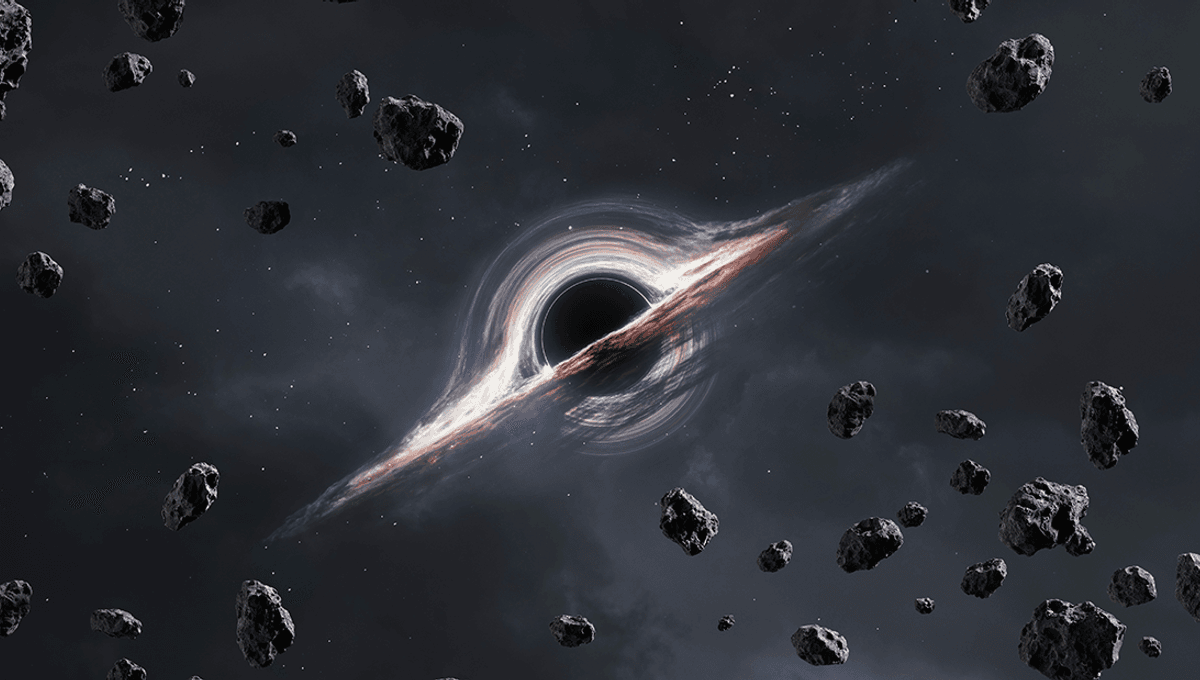
Black holes are weird. Predicted as a result of Einstein’s general theory of relativity, they contain an outer region known as the event horizon – from which nothing, even light can escape. As well as this, they are predicted to have an infinitely dense point where our understanding of physics breaks down, and nothing makes any sense.
That’s before we even get into the black hole information paradox. If a black hole has mass (and they have a lot of it) then they should have a temperature according to the first law of thermodynamics, and in line with the second law of thermodynamics, they should radiate heat. Stephen Hawking showed that black holes should emit radiation – now termed Hawking radiation – formed at a black hole’s boundary.
“Hawking then pointed to a paradox. If a black hole can evaporate, a portion of the information it contains is lost forever,” French astrophysicist Jean-Pierre Luminet explains in a 2016 review. “The information contained in thermal radiation emitted by a black hole is degraded; it does not recapitulate information about matter previously swallowed by the black hole. The irretrievable loss of information conflicts with one of the basic postulates of quantum mechanics. According to the Schrödinger equation, physical systems that change over time cannot create or destroy information, a property known as unitarity.”
In short, we’re probably missing something. Physicists and mathematicians have attempted to come up with ideas that do away with these problems, and ended up with some pretty strange results. Some have even suggested that the universe could be holographic, with the universe we know and love really being the result of interactions at the infinitely distant boundary. We told you black holes were weird.
And yet, we have definitely observed objects that appear to have the properties of black holes, including (but far from limited to) the image of the black hole M87*. But what if they don’t exist at all?
One idea is that black holes are actually “gravastars”, a portmanteau of gravity, vacuum, and stars. First proposed in 2002 by Pawel O. Mazur and Emil Mottola, the idea is that at some point during the collapse of a large star the intense gravity transforms its matter into a new state similar to Bose-Einstein Condensate (BEC).
BEC occurs when atoms are cooled to such low energy states that they begin acting like a single “super atom“. In gravastars, the team suggested that as the star collapses to the point of the event horizon its matter is transformed into a new state, which exerts outward pressure and prevents the star from collapsing into a physics-defying singularity. In gravastars, this heavily-warped (but familiar) spacetime is surrounded by an ultra-thin, ultra-cold, and ultra-dark and virtually indestructible shell.
“Since this new form of matter is very durable, but somewhat flexible, like a bubble, anything that became trapped by its intense gravity and smashed into it would be obliterated and then assimilated into the shell of the Gravastar,” Mottola said in a statement following the first paper on gravastars.
One of the main appeals of gravastars is doing away with messy event horizons and singularities. But though interesting as an idea, they also have to explain what we observe, and we have certainly observed objects that look like black holes.
“This shadow is not caused by the trapping of light in the event horizon, but by a slightly different phenomenon called the ‘gravitational redshift,’ causing light to lose energy when it moves through a region with a strong gravitational field,” João Luís Rosa, a professor of physics at the University of Gdańsk in Poland and author on a new study of gravastars told Live Science. “Indeed, when the light emitted from regions close to these alternative objects reach[es] our telescopes, most of its energy would have been lost to the gravitational field, causing the appearance of this shadow.”
Like with black holes, things get messy when you add in rotation, and there are (contested) suggestions that gravastars would not be stable as they rotate. And they are a little weird too (hey, this is the universe we’re talking about). There are suggestions that the interiors of gravastars could contain a series of thicker shells, known as nestars.
They aren’t perfect, and there is a lot of work to be done on modeling how they work. It’s also possible that both black holes and gravastars exist. A big problem is that it is difficult to distinguish between the two, though some models suggest that they should emit very different gravitational radiation, allowing us to know whether we’re looking at gravastars or traditional black holes, and all the headaches they entail.
Rosa and colleagues’ new study is published in Physical Review D.
Source Link: What If Black Holes... Don't Exist? Could We Be Looking At Gravastars?